Robert Ressler, the FBI genius who prised open Ted Bundy’s head
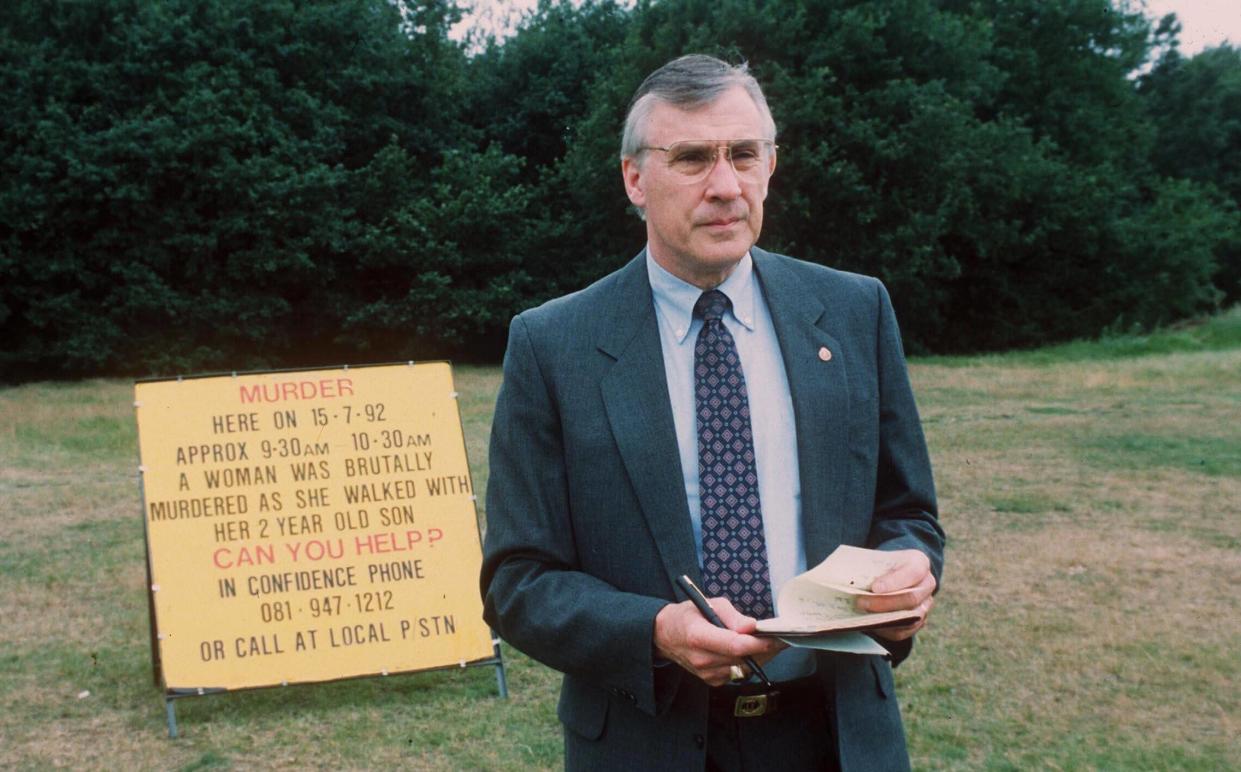
- Oops!Something went wrong.Please try again later.
The pioneering FBI profiler Robert K Ressler was never impressed with the cult of personality around Ted Bundy. In his 1992 book, Whoever Fights Monsters, Ressler described in detail the worst of Bundy’s 1970s crimes. “This guy was an animal,” he added, “and it amazed me that the media seemed unable to understand that.”
Today, almost 50 years after the American press first framed Bundy as charming and enigmatic, the obsession continues – often at the expense of remembering his 30 (and likely more) female victims, whom he kidnapped, raped and killed. The Elijah Wood-starring film No Man of God has just been released on DVD, while Ted Bundy: American Bogeyman, led by Chad Michael Murray, has briefly appeared in American cinemas. These followed Zac Efron’s portrayal of Bundy in another film, Extremely Wicked, Shockingly Evil and Vile, and Netflix’s divisive 2019 series, Conversations with a Killer: The Ted Bundy Tapes.
But Ressler’s work deserves the limelight: he changed how murders are investigated in the real world. The FBI man, who’s credited with coining the term “serial killer”, conducted a number of interviews with murderers (including Bundy) that enabled the Bureau to create profiles of those who were still at large, based on the psychology, patterns and behaviours of the ones behind bars. He referred to getting into the criminal mind as his “hobby-horse”. In American Boogeyman, on the Bundy trail, he’s played by Jake Hays, while his interviews are the basis for David Fincher’s Netflix series, Mindhunter, in which he’s reimagined in the character of Bill Tench (played by Holt McCallany).
“He had passion for understanding these violent offenders,” says Mark Safarik, a former FBI profiler, and Ressler’s partner at Forensic Behavioral Services. “He was constantly driving the research to understand these individuals – whether it was serial murder, spree murder or mass murder.”
Ressler was just nine years old when he became fascinated with killers. In 1945, his native Chicago was rocked by the murders of two women and a six-year-old girl; their dismembered body parts were found in the sewers. The culprit was dubbed “the Lipstick Killer” after scrawling a message on the wall of one crime scene: “For heavens Sake catch me Before I kill more I cannot control myself.”
Inspired by a Little Rascals-type film, Ressler and his pal formed a detective agency to catch the killer – mostly by following people around while disguised in long coats. Meanwhile, the police arrested William Heirens, a 17-year-old fetish burglar. “The Lipstick Murders just caught my imagination, and that never went away,” Ressler later said. “I wanted to understand people like William Heirens.” (Or, rather, the way Heirens was framed in the public eye: he confessed under police torture, and his conviction remains the subject of debate.)
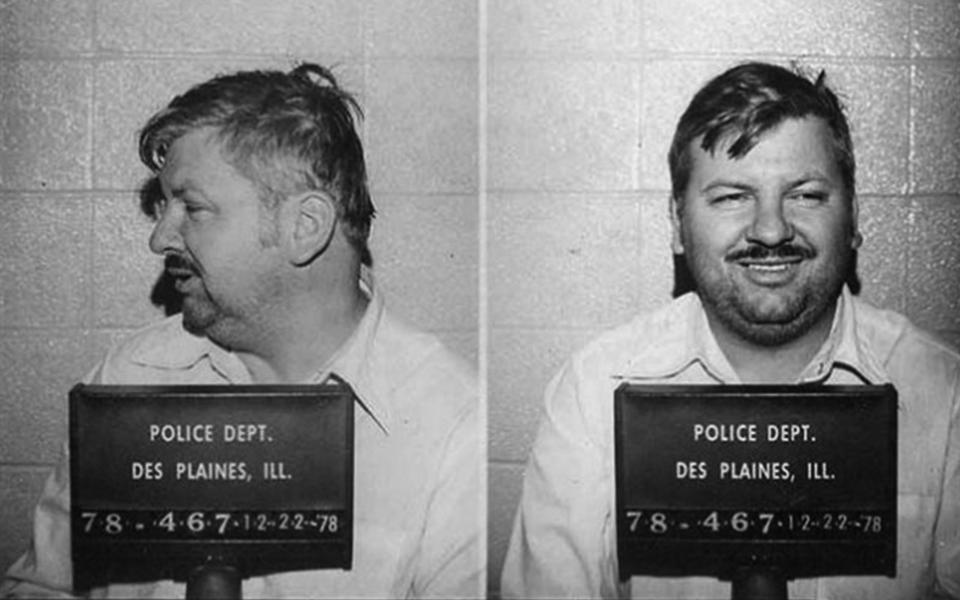
Little did Ressler know, he had grown up close to another notorious serial killer – John Wayne Gacy, who murdered 33 young men and boys. Gacy was nicknamed “The Killer Clown” for his dressing up to entertain children. Ressler had lived just four blocks away from him. “We were in the Boy Scouts together,” Ressler later recalled. “I sometimes wonder how we ended up on the opposite sides of the law. What made me a cop? What made him a serial killer?”
Ressler worked as an investigator for the US Army in Germany, Thailand and back at home in Illinois. He joined the FBI in 1970, before in 1974 becoming a class counsellor for visiting police officers at the FBI National Academy in Quantico. He was attracted to what he called the “fledgling” Behavioural Science Unit – then consisting of just two men – and he became its chief profiler. He would travel across America and the rest of the world to teach the process of analysing a crime scene and criminal behaviour to create a profile of a probable suspect.
Safarik was a detective working violent crimes, and attended a two-week homicide course (though he wasn’t taught personally by Ressler). “It was the first time I’d heard of criminal profiling and behavioural analysis,” he says. “I was blown away by this different way of looking at violent crime.”
Ressler would request files on violent-crime cases from the places he visited, and used these to build a rudimentary database. He soon struck upon the idea of interviewing the killers themselves. (“I wanted to know what made these people tick,” he said.) During one of his teaching trips, in early 1978, he took a tour of California prisons and conducted his first interviews. They included Sihran Sihran (the assassin of Robert Kennedy), Edmund Kemper (the “Co-Ed Killer”, so named for his murders of college girls), Charles Manson, and members of Manson’s so-called “family”. (Manson asked for Ressler’s sunglasses, so he could tell the other prisoners he’d conned an FBI agent out of his shades. This moment, too, was recreated in Mindhunter.)
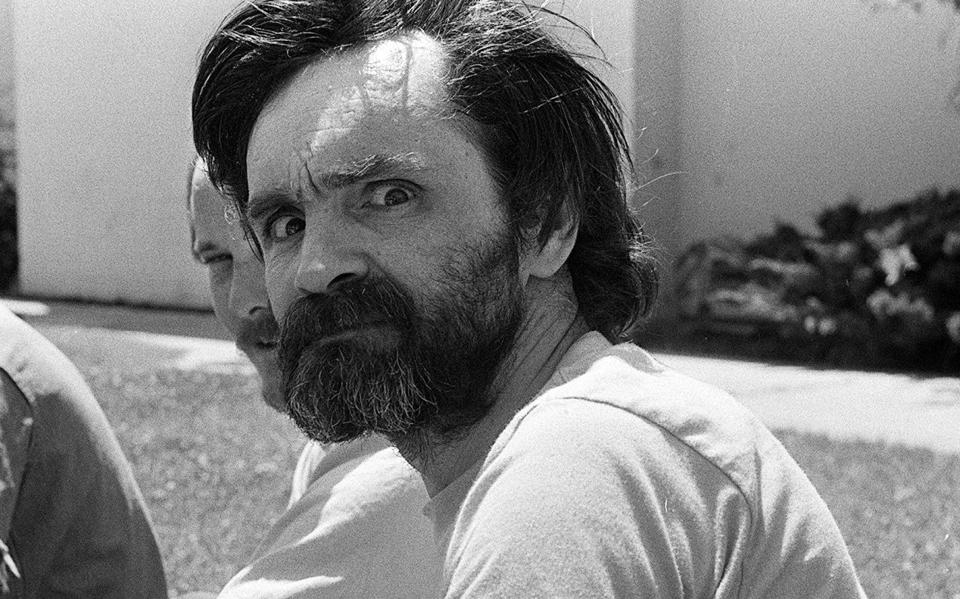
Ressler conducted his initial interviews, however, without informing his superiors. It seemed easier to ask for forgiveness than permission; according to his book, the FBI in those days was uninterested in murderers. Innovation, in Ressler’s eyes, was discouraged, and the FBI saw little value in using psychiatrists. As he put it: “If there was something worth knowing about criminals, the Bureau already knew it.”
Once Ressler’s interviews came to light, John McDermott – a high-ranking FBI man nicknamed “The Radish” for his beet-red face – pulled the plug. Ressler simply waited for The Radish to retire, whereupon the new FBI director William Webster approved the programme, named the Criminal Personality Research Project. Ressler worked alongside other profilers who became influential in the field, including Howard Teten, Patrick Mullaney and John Douglas
Thirty-six different killers were questioned about their childhoods, behaviour and crimes. The team’s skill in executing these carefully prepared interviews is staggering – the task required reverse psychology, communication skills, pandering, objectivity and the ability to not be manipulated.
“You’re looking to build a rapport,” says Safarik, “so [the killers] feel comfortable talking to you, and have a level of respect and trust. You’re not trying to be their friend. You don’t lie to them. If you tell them something, you follow through. Often, if you do that, they have respect.” (As Ressler wrote: “These people may be crazy, but they’re not stupid. Nor entirely insensitive to the nuances of interpersonal behaviour.”)
The interviews, however, took their toll on Ressler and his team: nightmares, bleeding ulcers, weight loss and anxiety attacks. One killer manipulated an agent so masterfully that he passed over FBI documents to help the killer form an appeal. The agent had peered too deeply into “the abyss”, Ressler later admitted.
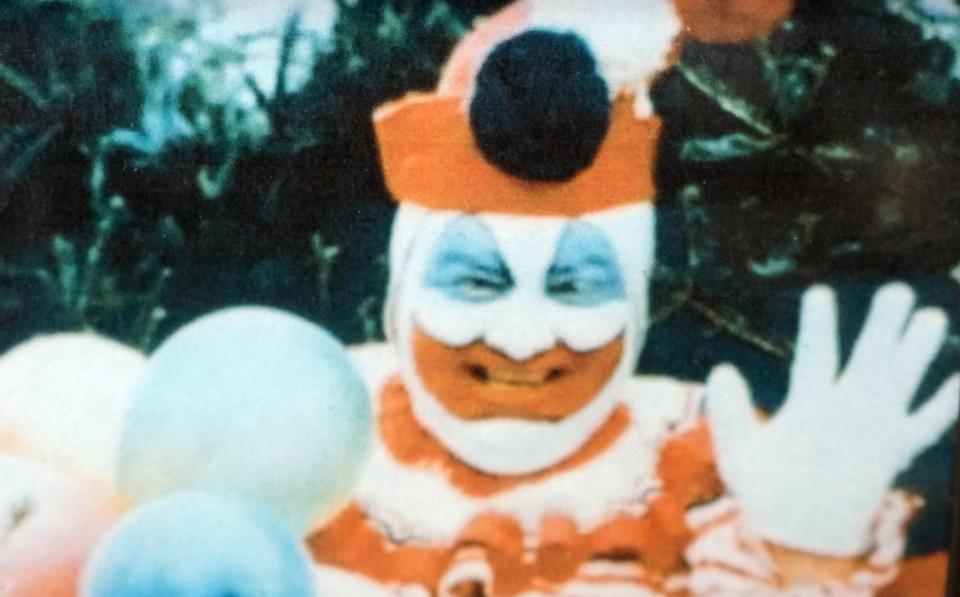
Ressler himself built a rapport with John Wayne Gacy, partly based on their shared neighbourhood. “Gacy claimed to know me from his childhood. He remembered delivering groceries to my mother’s house, even describing some unusual flower-pots that were part of the landscaping.” Ressler interviewed Gacy across 10 years; the killer gifted the investigator with a painting – a self-portrait in his clown guise – and requested that Ressler be present at his execution. (Ressler declined.)
One of the most disturbing moments of his career came during an interview with Kemper, when Ressler realised that he was trapped alone in a cell with the 6’ 9”, 300lb killer while the guards outside swapped shifts. Though articulate, intelligent and cordial, Kemper had murdered 10 people, including his own mother. Sensing Ressler’s sudden fear, Kemper intimidated him. “If I went apes---t in here, you’d be in a lot of trouble, wouldn’t you? I could screw your head off and place it on the table to greet the guard.”
When Ressler warned him that that would be a bad idea, Kemper replied: “What are they going to do? Take away my TV privileges?” Afterwards, Kemper insisted that he’d been joking. This scene, too, was dramatised in Mindhunter, for a scene in which Kemper corners Holden Ford (Jonathan Groff), the character based on Ressler’s colleague, Douglas.
The Netflix show – based on the book of the same name by Douglas – attributes most of the credit for the serial-killer interviews and behavioural-science work to Douglas. “That’s one of things that really bothers me about Mindhunter,” says Safarik. “They’ve reversed the roles in that show – they made it look like Ressler wasn’t interested and was just going along with it. It’s exactly the opposite. Ressler was driving the research and doing the interviews. He brought Douglas along – Douglas was a junior agent in the unit.”
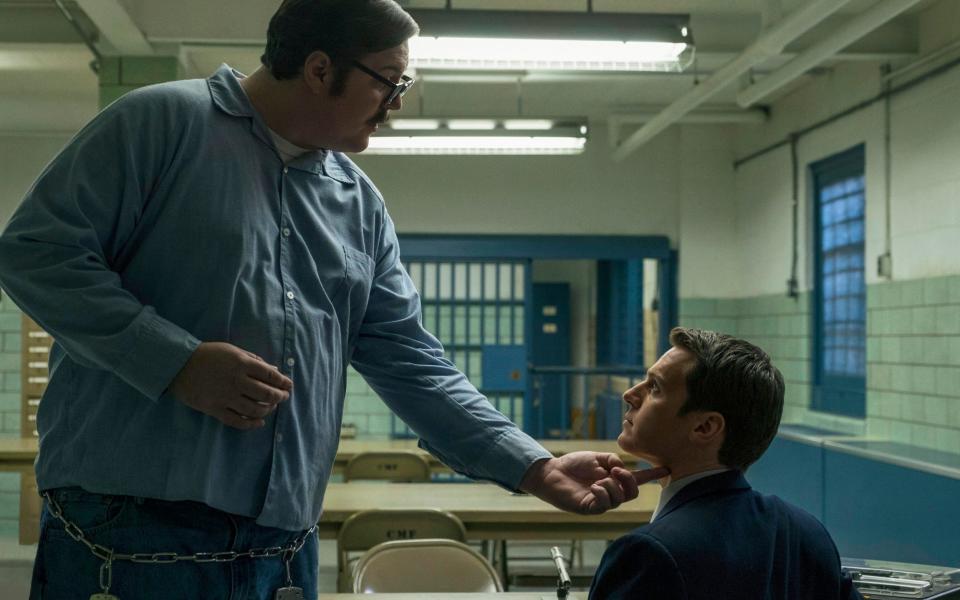
While Douglas’s book became a manifesto for the death sentence, Ressler believed that killers should be kept alive so we might learn from them. The killer, however, whom he most struggled to figure out was Bundy. Ressler was briefly attached to this investigation in the mid-1970s, and the manhunt for Bundy – who was captured and escaped, and whose crimes spanned multiple states – would change how things were done.
“There were a lot of firsts with Bundy,” says Safarik. “The first real task-force was put together. Investigators from four different states met in Utah with cases they thought might be related. It was the first time that investigators got together inter-state.”
FBI analyst Bill Hagmaier interviewed Bundy more extensively – this is the subject of No Man of God, with Elijah Wood playing Hagmaier – but Ressler did eventually interview the killer himself. Bundy offered to become a consultant to the Behavioural Science Unit, and schmoozed Ressler with a mixture of praise and mind-games. Ressler soon discovered that Bundy had procured, through another agent, a signed copy of his textbook.
“I was really afraid that he got deeper into my mind than I ever got into his,” Ressler later said. “I still don’t really know who was in control, and that bothers me to this day. Bundy was a master at his game.”
In Whoever Fights Monsters, Ressler described how his work was applied to murder cases. In 1983, he was called to Bellevue, Nebraska, where a 13-year-old paperboy had disappeared mid-route. The boy’s body was found two days later, bound, partially stripped and mutilated. Three months later, another boy was killed, also partially stripped and near-decapitated.
In both instances, Ressler flew in. He analysed the crime scene, the post-mortem and probable chain of events to create a profile: a young white male, of slight build, probably a mechanic at the local airbase, who read detective magazines and might be a scoutmaster. The following month, the police arrested John Joubert: a 21-year-old white male, just 5’ 6” and 164 lbs, a radar technician at the local airbase, who owned a stash of detective magazines and was an assistant scoutmaster. Joubert would be found guilty and executed in 1993.

“It’s more than collecting evidence, doing photographs and interviewing witnesses,” Safarik says of profiling. “It’s integrating the forensic evidence and behavioural evidence to understand the dynamics. You’re trying to put together the totality of what’s going on – what’s driving the crime. If you understand that, you understand a lot about your offender and the relationship between the offender and victim. Ressler was at the forefront of this, constantly driving the research.”
Ressler was key to the creation of the FBI’s National Center for the Analysis of Violent Crime, and ViCAP, a computer database that tracks and cross-references violent crimes. Conferences and training led by Ressler’s work would also lead to the creation of behavioural science units around the world. He directly affected the serial killers we see on screen, as well. He helped the novelist Thomas Harris, for instance, with background research for both Red Dragon (1981) and The Silence of the Lambs (1988); Harris attended Ressler’s courses at Quantico. Ressler provided an analysis of Red Dragon’s killer, The Tooth Fairy – though the latter possessed an unlikely combination of killer attributes – and consulted on the framing of Hannibal Lecter for the film version of The Silence of the Lambs (1991).
After retiring in 1990, he consulted on crimes around the world. Suffering from Parkinson’s disease, he invited Safarik to take the reins of his practice. The latter tells me that he was humbled: “He was a giant in the field.” (Ressler passed away in 2013.) Safarik adds that the serial killers whom Ressler interviewed were likely just as flattered.
“I think a lot of them wanted to be interviewed by Ressler because of the work that he’d done. They’d think they were special. It was a feather in their cap that he would want to talk to them.”

